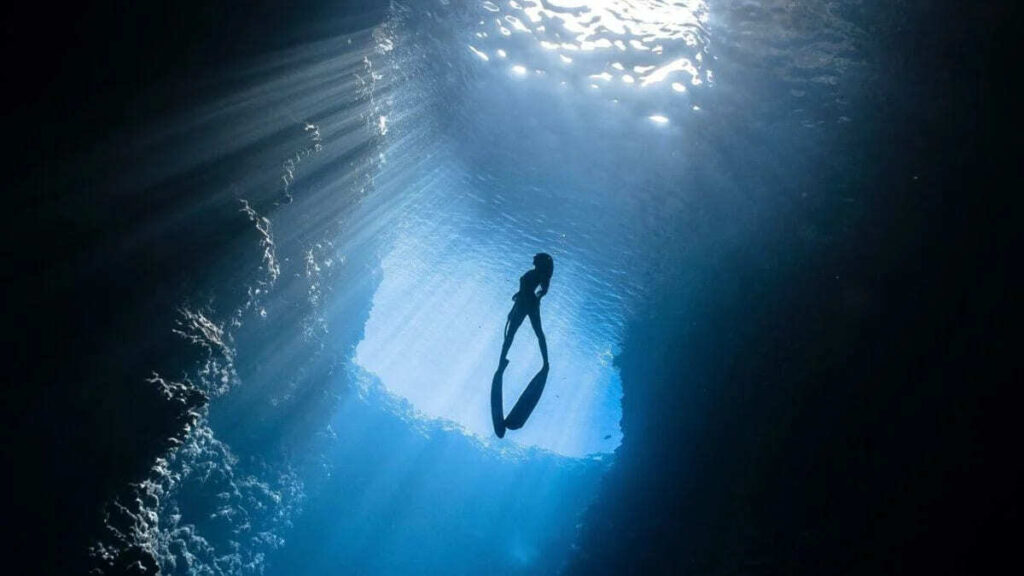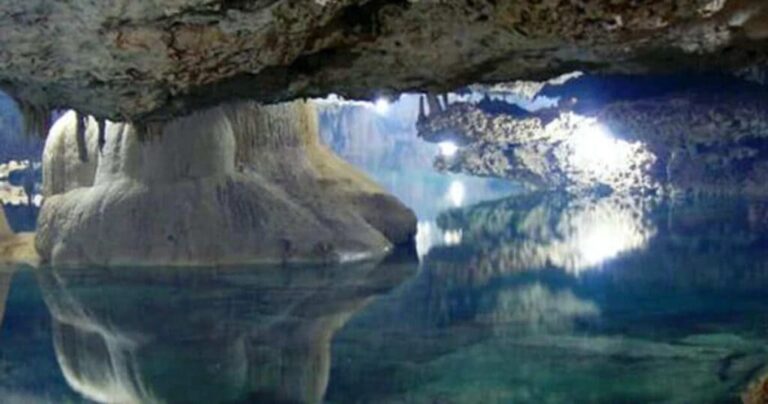It’s hard to imagine anything more mysterious than the deep sea — until you learn that an even bigger ocean may be hiding far below our feet. Deep within the Earth, 700 kilometers down, scientists have uncovered evidence of a colossal underground ocean locked inside the planet’s mantle. And here’s the twist: this hidden ocean may contain three times more water than all the seas on the surface combined.
A Vast Ocean Hidden in the Mantle
For years, researchers have debated the origins of Earth’s water. Was it delivered by icy comets? Or did it emerge from deep inside the planet itself? A groundbreaking discovery now leans heavily toward the second theory.
Scientists studying a mineral called ringwoodite — a type of blue rock found in Earth’s mantle — found that it can trap enormous amounts of water within its crystal structure. Buried roughly 700 kilometers underground, this hidden reservoir forms what many describe as a “mantle ocean,” one so massive that it challenges everything we thought we knew about Earth’s hydrological past.
Some researchers believe this discovery could completely reshape theories about how the oceans formed. Instead of being delivered from space, Earth’s water may have slowly leaked outward from within — a concept that turns the traditional story on its head.
How Scientists Found an Ocean Without Water
Detecting an ocean you can’t see, touch, or dive into is no small feat. To uncover this underground wonder, geophysicists deployed more than 2,000 seismographs across the United States and analyzed seismic waves from over 500 earthquakes.
When seismic waves travel through wet rock, they slow down. That tiny delay, measured with extreme precision, allowed scientists to pinpoint enormous pockets of water trapped deep below the crust. As Northwestern University researcher Steven Jacobsen explained, “It’s the most compelling evidence we have that Earth’s water came from within.”
According to Jacobsen, this vast reservoir could also explain why ocean levels have stayed relatively stable for millions of years. Without this hidden buffer, the planet might look drastically different — with vast areas flooded and only the highest mountains rising above the waterline.

Rethinking the Earth’s Water Cycle
This discovery doesn’t just rewrite the past — it may reshape the way we think about the future. If huge amounts of water lie locked deep in the mantle, it suggests Earth’s water cycle is far more complex than surface evaporation and rainfall.
Researchers now suspect that water slowly moves between the surface and interior over geological time, “sweating” through the mantle in tiny channels between mineral grains. It’s a continuous exchange that may have helped stabilize Earth’s oceans long enough for life to flourish.
The next phase of research will involve collecting seismic data from around the world to determine whether this mantle-bound water is a global phenomenon. If it is, scientists may be on the verge of redefining one of the most fundamental processes shaping our planet.
This discovery reminds us that even in a world mapped by satellites and scanned by supercomputers, Earth still holds astonishing secrets — some buried deep enough to change our understanding of how our planet came to be, and how it continues to evolve beneath our feet.






